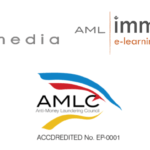Why is Measuring Training Success Important in 2021
Posted on May 7, 2021


All L&D professionals and teams should keep on measuring training success even in 2021. A lot has changed in the past year, and not being able to gauge the effectiveness of your current training programs can cause you to lag behind.
Whether it is a classroom, virtual, or e-learning program, measuring training success is vital. By doing so, you can figure out ways to enhance existing training, craft better ones, and confirm whether your training programs have had a lasting impact on the teams, and ultimately, on the business itself.
How can measuring training success make a difference?
There are four levels of approach to evaluate any course or training program according to Kirkpatrick’s Model of Training Evaluation. These are reaction, learning, behavior, and results.
Level 1 – Reaction. How did the participants react or respond to the training?
Knowing your learners’ reaction to the training program helps you understand their overall experience and satisfaction with the learning experience you provided. You can measure this through feedback forms or surveys. Including specific evaluation points such as the course coverage, its relevance to the learners, the training delivery, or the trainer itself can be a way to gather valuable insights from your participants. Adding a dedicated suggestion section can also encourage your trainees to provide specific recommendations.
It applies to all kinds of training programs, from soft skills to technical skills and others.
Level 2 – Learning. How much did your learners learn from the training?
Measuring learning is quite tricky, and L&D teams do this in a lot of different ways. It can be through a quiz or exam deployed pre- and/or post-training or knowledge checks or short quizzes in between training sessions. Some even roll out follow-up training assessment weeks or months after the training. This level of evaluation suits technical skills or hard skills training programs the most. You can verify whether the learning objectives have been met and even getting an idea of your learners’ retention through measuring learning.
Lastly, evaluating your learners’ takeaways can help you design your next training program. It could be an advanced training session for upskilling. It could also be a follow-up training focused on commonly missed topics from the previous program to bridge the current skill or knowledge gap, if any.
Level 3 – Behavior. Did your learners put their learning into practice?
Assessing how much your learners’ behavior has changed because of training programs is particularly important. It might require a lot of effort to measure and gather data but having an idea of how much your learners’ behavior improved can dictate whether the training program has been effective or not. Some ways to measure behavioral change are through workplace observations, performance monitoring. Comparing their manager or team leader’s assessment from pre- and post-training could be a good indicator as well.
You can measure behavior qualitatively and quantitatively. For example, you roll out standard customer service training for your frontline service teams. You can compare behavioral change through a skill audit based on standards, and then comparing their skills from before and after the training, and voila! You have quantifiable information. Your assessment notes and the customer commendations your trainees receive can be considered qualitative information, giving you the best of both worlds.
Level 4 – Results. Did the training program impact business goals and meet the stakeholders’ expectations?
Assessing how much of an impact a training program brings to the business is the final and most important step to evaluate its success. Measuring results such as productivity, quality, efficiency, and customer satisfaction ratings can give you a good glimpse of whether the training program was well worth it.
Nowadays, targeted business results are established at the very beginning of training program development. L&D teams work on the specifics of the training program from there.
The Bottom Line
Kirkpatrick’s Model of Training Evaluation has been heavily relied on by training professionals for decades for logical reasons. In measuring training success, you can choose to do all levels of evaluation above or choose which are best applied. Formulating a customized evaluation schedule for each training program can get you all the metrics you need moving forward.
The bottom line is that training is about improving as individuals and as a team to influence and meet the overall vision and mission of the business. Measuring training success and effectiveness is a way to ensure that you are on track in achieving both learning goals and targeted business results.
Easily measure and track your training programs in one learning management system with Immersive LMS! Download the full feature list here or you can also book a quick chat with our team to discuss further and request a demo.













